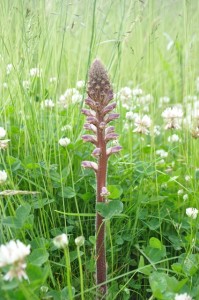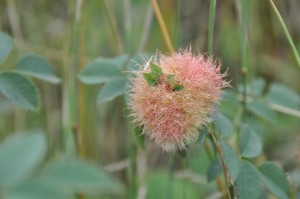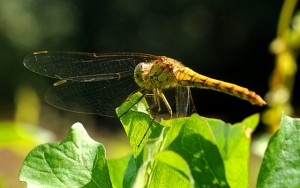First came across this last year, and didn’t have a clue. Some weird orchid maybe or a butterbur flower or a helleborine?
Triffid like in its initial appearance, at closer inspection it is as interesting and intricate as any other angiosperm, but with one disturbing difference – NO GREEN!! No Chlorophyll whatsoever. Hence the title – it has no option but to feed upon and breed upon some non-consenting host; in this case Trifolium repens. Classed as a holoparasite, the dust like seed of Common Broomrape (Orobanche minor) remains dormant in the soil for up to 15 years until the right chemical signals
are sent out from the roots of a possible victim. It then develops and inserts haustoria (kind of root) into the host
plant and starts to feed.
Onto a very different parasite, and another first at
Broxtead, probably because I’ve never stopped to look before; although the
books do say that it occurs most often in drought conditions on sandy
soils. Made famous by Beatrix Potter’s Squirrel Nutkin whilst he was irritating Mr Brown, Robin’s Pin Cushion or The Bedeguar Gall is the slightly unnatural creation of Diplolepsis rosae, one of the myriad of solitary parasitic wasps that, amongst other pathogens, create a huge variety of alien looking homes on almost all plant genera. Occurring most commonly on my second favourite rose, R.canina,
Robin’s Pin Cushion forms when this specific wasp inserts up to 30 eggs into a leaf bud. The rose responds to this
intrusion by dramatically altering its cell structure to form this bizarre shape. However, what goes on inside
this, and many other galls, really is enough to completely discombobulate the cranial juices, and far too complex to explain here. Suffice to say, not only do the wasp larvae develop inside the gall, but there are different wasps that come along and lay
their eggs in the already created gall, and in some cases insert them into the larvae of the gall creator itself. In fact there are at least 14 different parasitiods connected with this specific
gall alone. Another world!
And lastly, a rather more controversial pest, if you are a
bumblebee that is. He maybe this farm’s namesake, but old Mr Brock is wreaking havoc on the Bombus population. Every day I come across another dozen or so bee and wasp nests ripped out of the ground, presumably for the grubs and small
amounts of honey. So it is not just the fault of farmers that bees are supposedly in decline. Or maybe it’s the raptor argument? In the same way that we are told, lots of sparrowhawks mean a healthy small bird population , then lots of badgers
equates to a healthy bee population. We have got lots of raptors and a shed full of Brocks so ipso facto we have got heaps of songbirds and a huge variety and number of bees. So let’s just accept that farmers are actually pretty good at looking after wildlife!!






